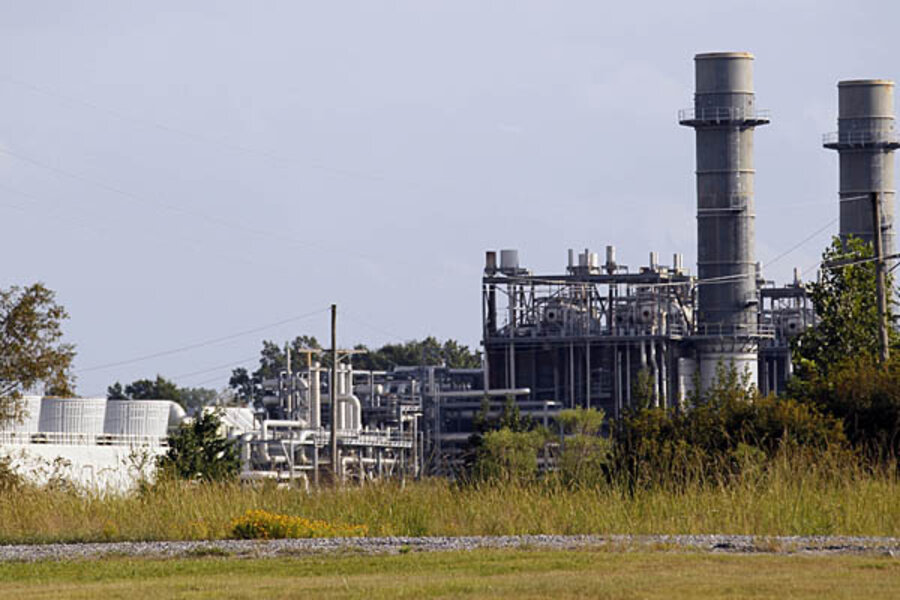Drowning in natural gas: Are exports the answer?
Loading...
The US has an overabundance of natural gas and production is rising despite a reduction in the number of natural gas rigs in operation. Yet the US is only scratching the surface of its natural gas reserves that can be unleashed by fracking. One answer to this overabundance is exports, so why is it such a sensitive issue?
As far as the natural gas industry is concerned, a shift to exporting is a no-brainer. However, this is easier said than done. Before the shale gas boom and the fracking revolution, the US thought it was destined to be a natural gas importer; as such, it does not have the necessary export terminal infrastructure. In fact, it has only one truly viable export terminal courtesy of Cheniere Energy.
And the process of exporting requires the gas to be cooled for condensation to become liquid natural gas (LNG) before it is pumped onto tankers designed specifically to hold natural gas. The US also has only one (old) processing plant for this in Alaska, operated by ConocoPhillips.
The answer then, for the natural gas industry, is to get busy building the necessary export terminals. But his is also problematic thanks to a regulatory environment that hinders natural gas exports. So the current picture is that the US is exporting only to Canada and Mexico, and any other export destinations are challenging at best. (RELATED: Iran's People Suffer as Oil Income Protects the Government from Hyperinflation)
In line with a May 2012 regulation, the natural gas industry must apply for special export authorization to the following Free Trade Agreement (FTA) countries: Australia, Bahrain, Canada, Chile, Colombia, Dominic Republic, El Salvador, Guatemala, Honduras, Jordan, Mexico, Morocco, Nicaragua, Oman, Peru, Republic of Korea and Singapore. Costa Rica and Israel, also FTA countries, do not require special authorization. Obtaining permission to export to non-FTA countries is even more challenging, and for now export licenses are on hold.
For the first quarter of 2012, the Department of Energy reports a total of 840.4Bcf in natural gas imports, compared with 402.1Bcf in exports. Over 93% of those imports came from Canada, with 0.01% coming from Mexico. Likewise, over 65% of exports went to Canada and almost 32% to Mexico. There were no exports of US-produced LNG during this quarter. All LNG exports were of previously imported foreign-source LNG.
In the meantime, the natural gas industry is not waiting to see what the regulatory environment will bring. It’s getting down to business, with exports in mind come what may. Cheniere is already constructing an LNG processing plant at Sabine Pass in the Gulf of Mexico (bordering Texas and Louisiana). The launch date is expected to be 2015. The company is also hoping to win approval for a second LNG export terminal at Corpus Christi, Texas. Rivaling Cheniere processing plant plans is an effort by Royal Dutch Shell and a smaller Texas partner to create LNG processing facilities offshore. This “floating plant” would be an immense undertaking and would represent the largest vessel ever made. (RELATED: What the Future Holds for U.S. Energy Policy)
At the same time, ExxonMobil, in partnership with Qatar Petroleum, is lobbying for authorization to turn its Port Arthur, Texas, import terminal into an LNG export terminal in what would be a $10 billion project.
So, the gas production is up (more than 2.1 trillion cubic feet produced in June alone), the natural gas industry is at the starting blocks, ready to go, and geopolitically exports could offer a great deal of strategic benefit (see our recent article about Gazprom). Why, then, the hesitation?
Most of the opposition to exports is founded on the belief that if the US starts exporting its natural gas, prices would rise. This is probably true, but it will also be higher profits for the natural gas industry. There are also fears that such a move would lead to the creation of a natural gas cartel to compete against the US. This is likewise a possibility.
Both of these fears can be controlled somewhat by limited the volume of exports carefully. Furthermore, exports would lead to more jobs in the US (not in the least because of the boon in infrastructure projects necessary to make exports viable), and the revenues would help reduce the trade deficit.
Amid these fears, the Energy Department is stalling. Or more to the point, the Obama administration is stalling, unwilling to make a controversial decision on exports ahead of the November vote. The stalling tactic involves a lengthy analysis of how exports would affect the US economy—an analysis which appears to be undertaken by Cheniere itself. The analysis will be ready, conveniently, at the year’s end. This in itself is a signal that exports will likely go ahead, just not until after elections.
But one place an export decision is likely to unfold first is Alaska, where the state government is seeking to export LNG to Asian markets, which would necessitate a $50 billion pipeline and export complex. Why might Alaska be the first to take the export plunge? Well, one of the fears being bandied about by opponents of natural gas exports is that it might threaten supplies to national power utilities and petrochemical companies. Alaska is far enough away to minimize this perceived threat and as such it is likely to remain distanced from the debate to some extent.
In the interim, a pile of export proposals from the natural gas industry will sit and collect dust, but the immediate post-election period should see them dusted off with alacrity, regardless of the outcome of the elections.
Source: http://oilprice.com/Energy/Natural-Gas/Drowning-in-Natural-Gas-Is-the-Answer-Exports.html







